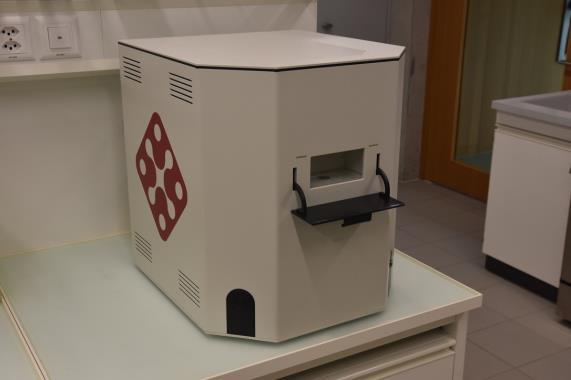
3 minute read
5 Computational Physics and Artificial Intelligence
Artificial intelligence (AI) algorithms and methods are already being used with great success in numerous commercial fields. Some of these new applications affect our everyday lives and our data is used every day by large corporations. While the use of personal data as a basis for training is a matter of social and ethical discourse, AI algorithms are an interesting field of research from a technical-scientific point of view, which is currently experiencing a pronounced surge in innovation and on its part also enables many innovations in other fields. At ICP, we are interested in applications that combine computational physics and artificial intelligence. Specifically, we are interested in machine learning (ML) and its combination with numerics. Our core competence continues to be in physical models, which describe natural or technological phenomena, usually through differential equations, and which are derived from physical laws. It is a great opportunity at this stage to combine this knowledge with the emerging field of machine learning. In the following, we present the possible areas of application and show what contributions we can make.
Advertisement
Physical simulation for the generation of synthetic data
Physical simulations are used to provide the necessary training data for the ML algorithms during the learning phase. Classical numerical methods are used, and the challenge is to find the right questions and to translate the results into useful applications. Often, the neural networks are trained with simulated data and then applied to unseen real data. Currently there are two projects at ICP. They are described in detail on pages 29 and 41 of this research report. Briefly: Supporting solar cell analysis with neural networks: For this purpose, a neural network is trained with simulated image data. The simulations are based on a multi-physical finite element model, which is evaluated thousands of times for the training step. Optimal control of a heat pump: A simulation comprising of several hundred years of operation is used to train a neural network in a heat pump control system. The neural network is thus trained to run the pump using as little electricity as possible, to effectively compensate for the stochastic fluctuations of the weather, and to provide a comfortable indoor climate at all times. Our expertise in dealing with industrial projects and our entrepreneurial mindset allow us to build bridges in this field and make machine learning accessible to companies that, until now, have not had access to this new analysis method.
Physically informed neural networks
The goal when merging the disciplines of physics simulation and machine learning is to integrate the laws of physics into ML algorithms. Either as constraints or, for example, also into the structure of the neural networks. In the process, a huge new field of research is emerging and currently more open questions are posed than answered [1]. The community is moving away from the premise that datadriven models should be found with a minimal prior knowledge and a large amount of training data. Rather, an attempt is made to integrate domain knowledge acquired over centuries into the algorithms. This combination leads to explainable data-driven models that rely on less data than classical machine learning.
Scientific Machine Learning
The aim of scientific machine learning is to use structured scientific models (differential equations) together with unstructured data-driven machine learning models in order to accelerate the simulations; to better approximate machine learning to true physical systems; and to maintain the robustness and explainability of the mechanistic dynamic models. A holistic approach focuses entirely on the application when formulating the initial problem and leaves the choice of method open at the beginning. Thereby, well-known optimization methods like the balancing calculation are available as an option, as well as learning with synthetic training data or with datadriven models, which are close to the differential equations of physics. Methods for inverse problems and automatic model finding are also available. First applications of scientific machine learning come from the fields of sustainable energy production, sensor technology, consumer electronics and medical technology. Concrete optimization steps are supported by machine learning. Applied research and development will thus be accelerated, especially in areas where pure physics-based models reach their limits of practical applicability. The particular challenge of scientific machine learning is how to efficiently and effectively integrate knowledge from physical modeling into the machine learning concept. Evelyne Knapp and Andreas Witzig
References:
M. Raissi et. al., Physics-informed neural networks: A deep learning framework for solving forward and inverse problems involving nonlinear partial differential equations, Journal of Computational Physics, Vol. 378, Pages 686707, Feb 2019. https://www.sciencedirect.com/science/article/pii/S0021999118307125









